Barbie & me: Why even in my 60s I'm fangirling over this timeless icon
I was 3 in 1959, when Barbie was born, and by the time I was 13, I had figured out why so many people love her and so many people hate her: She’s beautiful, she’s stylish, and she can stand on a pedestal.
She has an outfit for every job and every accessory but a baby. Why bog Barbie down with diapers and drudgery? After all, she’s already hauling around the emotional baggage of millions of people who seem to forget: She’s a doll.
A few years ago, after facing a barrage of complaints that Barbie’s impossibly hot plastic body made girls feel bad about themselves, Mattel felt compelled to declare the obvious in a press release: “It’s important to remember that Barbie is a doll who stands 11.5 inches tall and weighs 7.25 ounces. She was never modeled on the proportions of a real person.”
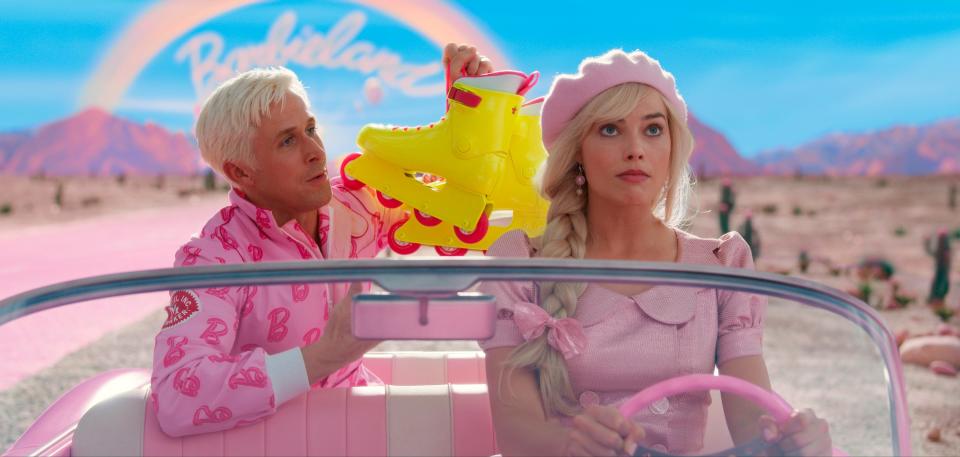
Dining news: What’s New Haven-style pizza? One family brings century-old secrets to new restaurant.
She’s only “real” when we infuse her with our own humanity — which director Greta Gerwig does in the new “Barbie” movie.
Gerwig’s wild pink romp — produced by star Margot Robbie with the backing of Barbie’s creator, Mattel — is rooted in the director’s own confidence, and her ability to be girly and funny and feminine and powerful, all at once, with no apology.
As she told The New York Times: “I kept thinking: Humans are the people that make dolls and then get mad at the dolls. We create them and then they create us and we recreate them and they recreate us. We’re in constant conversation with inanimate objects.”
People asked her, “What’s the story of Barbie?” She told the Times: “The story of Barbie is the fight that’s been going on about Barbie.”
Is she a fashionista? Yes. A fabulously frivolous creature? Yes. A feminist? Yes.
She is all of the above, as multi-dimensional as her 1960 bullet bra.
In the movie, Robbie’s Barbie lives in “Barbieland,” in a pink dream house, surrounded by other Barbies of many shapes, sizes, skin colors and jobs — including Kate McKinnon as “Weird Barbie,” that Barbie with the broken leg and chopped-off hair and “smell of basement.”
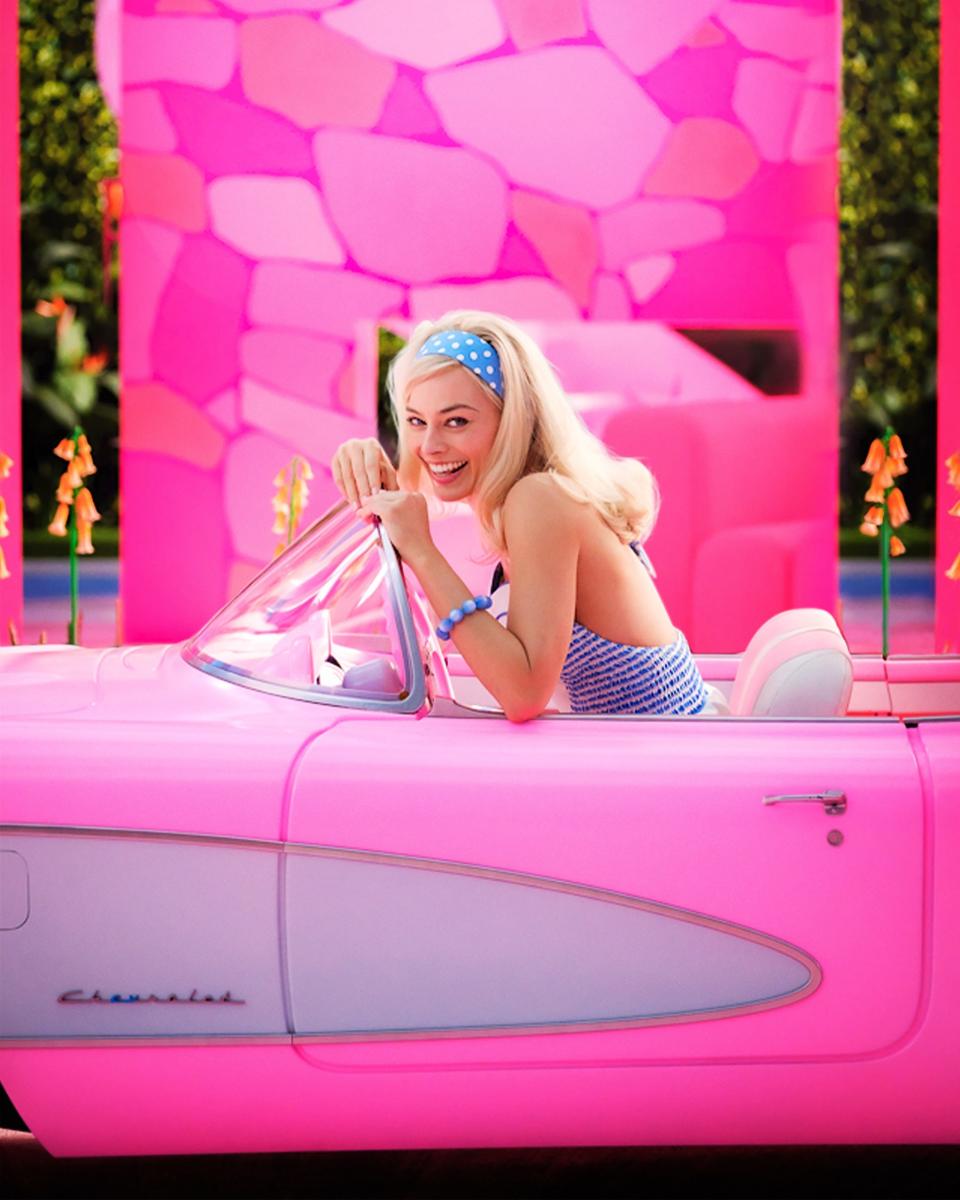
More observations from Jan Tuckwood: The new age of Objectification
Many Kens populate the film, including Ryan Gosling’s star Ken — who plays second fiddle to Barbie, providing her support and “Kenergy.”
The Kens have one main job: bounding around on the beach to try to attract the Barbies. Hence the intriguing tag line on the movie poster: “She’s everything. He’s just Ken.”
Lest you think Barbie’s a man-hating lightweight, pop your head back on straight and snap out of it. There’s a deeper point at play.
When Barbie’s feet suddenly go flat and she sees a patch of cellulite on her thigh, she is forced to drive her pink convertible from Barbieland — which looks like a fantasy version of swingin’ 1950s Palm Springs — into the “Real World,” where not everyone adores her. Somebody in the Real World has played with her too hard — creating her physical flaws.
To resolve her crisis, Barbie must become a superstar of inspiration as well as style. And Ken must come into his own and realize he is “Ken-ough.”
The idea of a “Barbie” movie has enthralled its star for years. “People feel strongly about Barbie,” Robbie told ABC News. “She was omnipresent in nearly everyone’s childhood. Over the last 64 years, it hasn’t taken much for Barbie to ignite conversations. There’s something about Barbie that blows things up.”
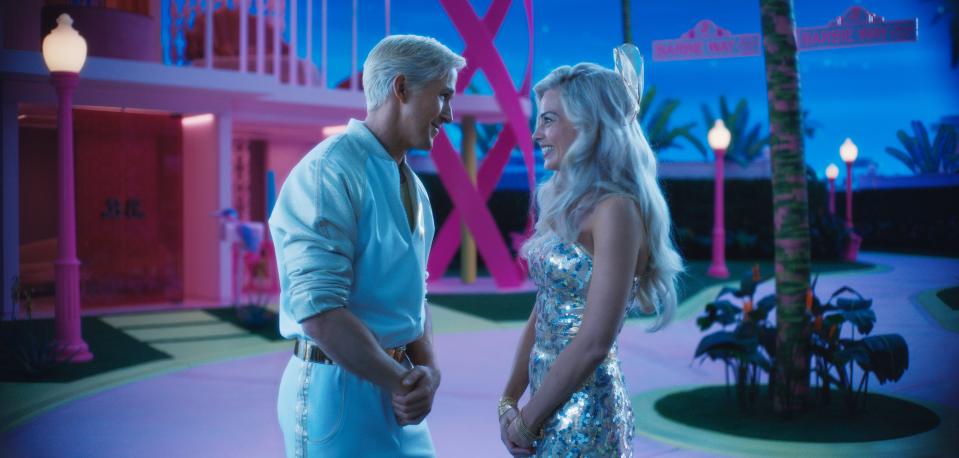
Her goal, with Gerwig, was to blow up the conversation about how women and men navigate the world, and do it “from a place of love.”
“We wanted to honor Barbie’s legacy and have a culturally relevant conversation,” she said. She assured Mattel, “None of this will feel mean-spirited. We’re going to be self-aware and deliver an uplifting experience.”
Both director and star call “Barbie” a feminist film — meaning, “anyone who believes men and women should be equal is feminist,” Robbie told ABC.
What’s next for Barbie? Mattel’s CEO Ynon Kreiz has big plans. Now that Barbie’s gone Hollywood, maybe she’ll become a superhero franchise, like Iron Man.
Kreiz joined Mattel in 2018, when Barbie sales were struggling, and Barbie seemed out of touch. The new movie gets Barbie’s groove back — because she’s part of the joke and also in on the joke. There is "humor and self-deprecation" in the film, he told the BBC. He’s in on the joke, too — he’s played in the film by Will Ferrell.
"This movie has been 64 years in the making," Kreiz told the BBC. "It represents how the culture sees Barbie today."
Golden years Barbie?
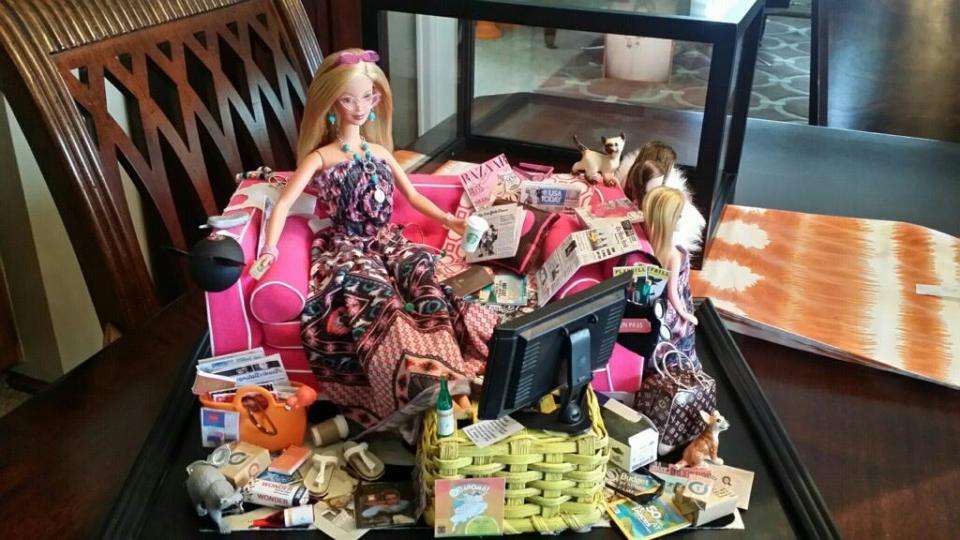
The ability to laugh at one’s self is a helpful trait for a senior citizen, plastic or otherwise.
Barbie and I are now in our golden years — or rose-gold, to continue the pink theme. My leg goes out sometimes, like Weird Barbie’s. My hair remains Malibu blond. My closet is full of outfits — and I have several shelves of collector Barbies, for the simple reason that I admire their beauty.
For me and my friend, historian Janet Naughton of West Palm Beach, Barbie is like Nancy Drew: “She is an icon who transcends time.”
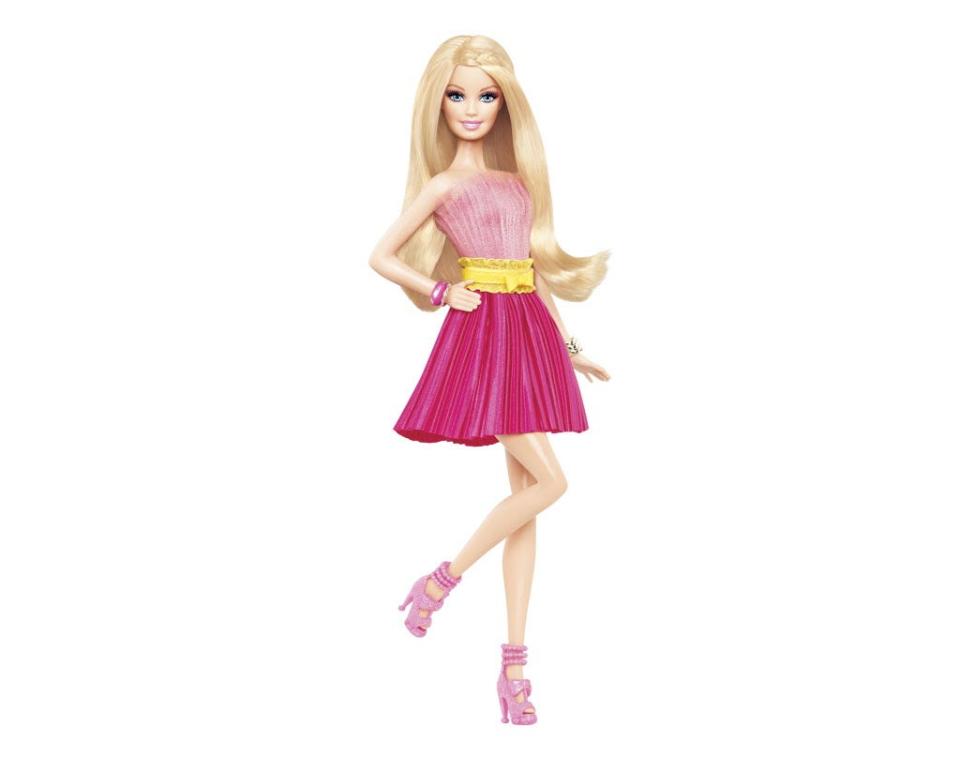
Janet still has her Malibu Barbie and her Live Action Ken from 1971 and multiple other Barbies in “happily played with” condition.
My high school friend Janet Church, a retired teacher from Stuart, has her original Midge doll — Midge is Barbie’s best friend — and dozens of outfits handmade by her late mother, who sewed Midge a wedding dress with tiny pearl buttons and a coat with faux fur trim, and knit her a mod miniskirt and scarf.
Our dolls are treasures now, and we are old enough to know Barbie’s true power: She becomes every emotion we pour into her. For me and my friends, that’s love.
How Barbie advertisements reflect social change
1959, Teen Fashion Model Barbie: The ad features a song: “Barbie, you’re beautiful. You make me feel … my Barbie doll is really real. Barbie’s small and so petite, her clothes and figure look so neat … purses, hats and gloves galore, and all the gadgets gals adore.”
1967, New Barbie: “She’s the very same size but now she comes with a groovy outdoor look … the new Barbie twists, the new Barbie turns. Wouldn’t you like the new Barbie?”
1985, Magic Moves Barbie: The ad says, “We girls love the spotlight. Right, Barbie?” “We girls can do anything. Right, Barbie?”
2021, Barbie Extra: The ad’s song: “Got that swag when she walks, got that sassy when she talks … she’s so bling-bling-bling money!”
This article originally appeared on Palm Beach Post: Jan Tuckwood on Barbie: the doll, the movie, the lifetime icon

